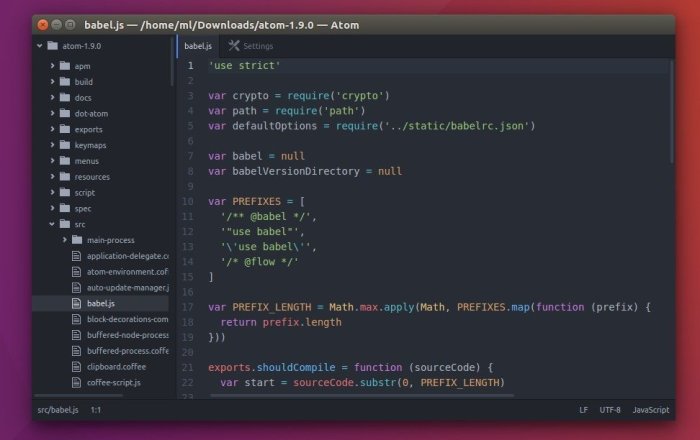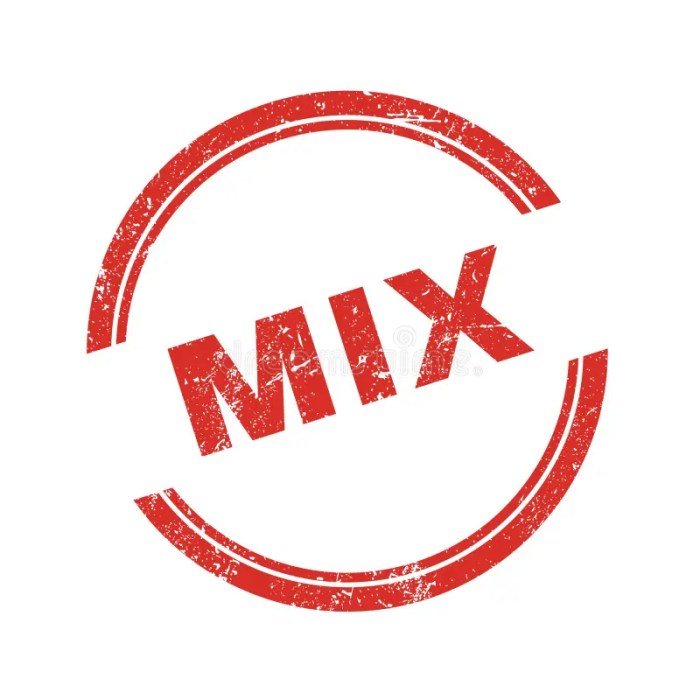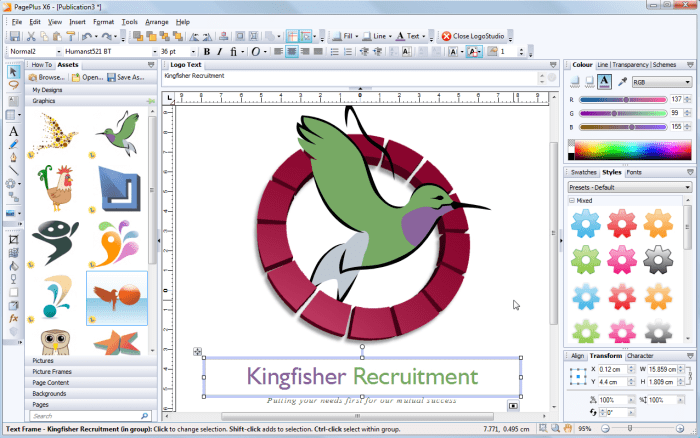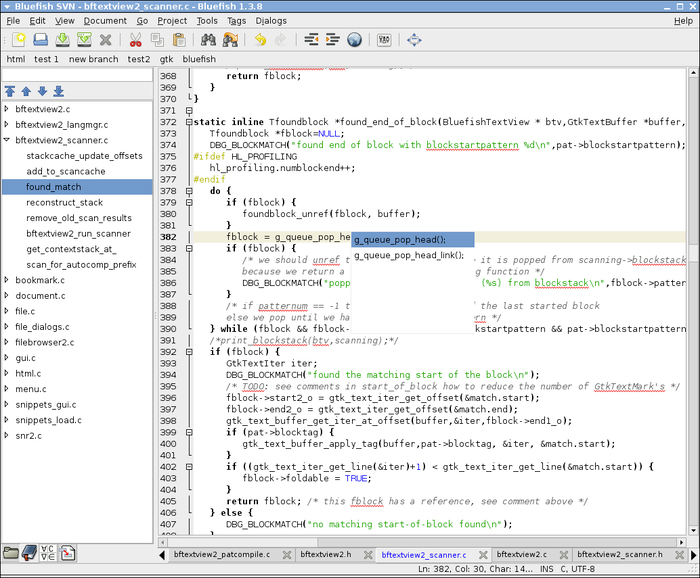Programs that allow you to mix text and graphics – Programs that allow users to seamlessly blend text and graphics have revolutionized the way we communicate, engage, and learn. These versatile tools empower individuals and organizations to create visually appealing and informative content that captivates audiences and enhances understanding.
From simple image editing software to advanced design applications, the landscape of programs that combine text and graphics is vast and ever-evolving. This comprehensive guide delves into the intricacies of these programs, exploring their key features, benefits, applications, and the latest industry trends.
Software Overview

Programs that allow users to mix text and graphics are designed to create visually appealing and informative content by combining written text with images, charts, diagrams, and other graphical elements. These programs offer a range of features and capabilities that enable users to produce high-quality documents, presentations, and other materials.
Key features of these programs typically include:
- Intuitive user interface for easy navigation and content creation
- Wide selection of templates and design elements to streamline the design process
- Advanced text editing tools for formatting, spell-checking, and grammar correction
- Image editing and manipulation capabilities for cropping, resizing, and adjusting images
- Object layering and grouping for organizing and managing content
- Collaboration features for sharing and editing content with others
Popular software in this category includes Microsoft Word, Adobe InDesign, Canva, and Google Docs.
Benefits and Applications: Programs That Allow You To Mix Text And Graphics

Programs that combine text and graphics offer numerous advantages over traditional text-only documents:
- Enhanced communication:Visuals can convey complex information more effectively than text alone, making it easier for audiences to understand and retain key messages.
- Increased engagement:Graphics capture attention and make content more engaging, leading to higher levels of audience involvement and interaction.
- Improved learning:Visual aids can facilitate learning by making abstract concepts more concrete and relatable, enhancing comprehension and retention.
These programs are widely used in various industries and contexts, including:
- Education:Creating educational materials, presentations, and interactive learning experiences
- Marketing and advertising:Designing brochures, flyers, social media graphics, and website landing pages
- Business:Developing proposals, reports, presentations, and marketing materials
- Non-profit organizations:Creating fundraising materials, newsletters, and outreach materials
Design and Layout
Effective design principles are essential for creating visually appealing and informative content:
- Hierarchy:Use font sizes, colors, and spacing to establish a clear visual hierarchy, guiding the reader’s eye through the content.
- Contrast:Create contrast between text and background elements to improve readability and visual impact.
- Alignment:Align text and graphics carefully to create a sense of order and balance.
- White space:Use white space effectively to separate elements, improve readability, and enhance visual appeal.
- Color:Choose colors that complement each other and enhance the overall message of the content.
When selecting fonts, colors, and images, consider the target audience and the purpose of the content:
- Fonts:Choose fonts that are easy to read and visually appealing, considering factors such as font size, style, and legibility.
- Colors:Use colors that are appropriate for the context and target audience, considering factors such as cultural associations and color psychology.
- Images:Select images that are relevant to the content and visually appealing, considering factors such as resolution, composition, and licensing.
Collaboration and Sharing

Programs that allow mixing text and graphics facilitate collaboration among users:
- Real-time collaboration:Multiple users can work on the same document simultaneously, allowing for seamless collaboration and efficient content creation.
- Version control:Features like version history and track changes enable users to track and manage changes, ensuring data integrity and preventing conflicts.
- Sharing and distribution:Content can be easily shared and distributed through email, cloud storage, and social media, allowing for wider reach and dissemination of information.
These programs can be particularly useful for team projects and presentations, where multiple individuals need to contribute to and review the content:
- Team projects:Collaborative tools allow team members to work together on documents, share ideas, and provide feedback, streamlining the project development process.
- Presentations:Programs that combine text and graphics enable users to create visually appealing and engaging presentations that can be shared with audiences.
Integration with Other Tools

Programs that combine text and graphics can be integrated with other software and applications, enhancing productivity and workflow efficiency:
- Data import and export:Data can be imported from other applications, such as spreadsheets and databases, and exported in various formats for further analysis or use.
- Plugin support:Plugins can be installed to extend the functionality of the program, adding new features and capabilities.
- API integration:Programs may provide APIs that allow them to be integrated with other applications and services, enabling automated workflows and data exchange.
Seamless integration with other tools can enhance productivity in the following ways:
- Automated workflows:Integrations can automate repetitive tasks, such as data extraction and formatting, saving time and reducing errors.
- Enhanced data analysis:Data imported from other applications can be analyzed and visualized within the program, providing deeper insights and decision-making support.
- Streamlined content creation:Plugins and integrations can add new features and capabilities to the program, making content creation more efficient and versatile.
Emerging Trends
The field of programs that allow mixing text and graphics is constantly evolving, with new technologies shaping the future of these programs:
- Artificial intelligence:AI-powered features, such as automated design and content generation, are becoming increasingly common, making content creation faster and more efficient.
- Augmented reality:AR technology is being integrated into these programs, allowing users to create interactive and immersive experiences that combine digital and physical elements.
- Cloud-based collaboration:Cloud-based platforms enable real-time collaboration and access to content from anywhere, fostering seamless teamwork and global reach.
These emerging trends are leading to innovative applications and use cases:
- Interactive educational content:AI-generated and AR-enhanced educational materials can make learning more engaging and personalized.
- Immersive marketing experiences:AR-integrated marketing campaigns can create interactive and memorable experiences for consumers.
- Remote collaboration:Cloud-based collaboration tools enable teams to work together effectively from anywhere in the world.
Popular Questions
What are the key benefits of using programs that combine text and graphics?
These programs enhance communication by making content more visually appealing, engaging, and easier to understand. They facilitate collaboration, allowing multiple users to work on projects simultaneously. Additionally, they streamline workflows by integrating with other software and automating tasks.
What are some examples of popular programs that allow users to mix text and graphics?
Popular programs include Adobe Photoshop, Canva, GIMP, Microsoft PowerPoint, and Google Slides.
How can these programs be used in various industries and contexts?
They are widely used in marketing, education, journalism, social media, and web design to create brochures, presentations, infographics, social media posts, and website content.